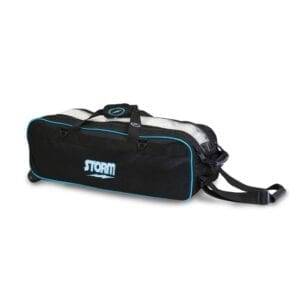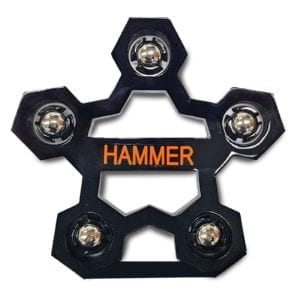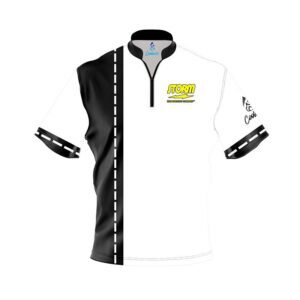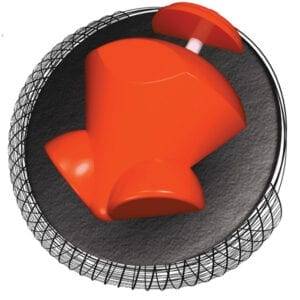Bowling How To's & Buyers Guides, Intermediate Level Bowling Tips, Lane Play & Lane Patterns, Surface & Layouts
Mastering Bowling Lane Conditions: Impact on Your Game Success

MASTERING BOWLING LANE CONDITIONS: IMPACT ON YOUR GAME SUCCESS
Understanding bowling lane conditions is crucial for any serious bowler looking to improve their game. The subtle variations in oil patterns and surface textures can have a significant impact on ball motion and overall performance. Adapting to these different lane conditions is key to mastering the sport of bowling and consistently achieving high scores.
Bowling lane conditions can present both challenges and opportunities for players. By gaining a deeper understanding of how these conditions affect ball behavior, bowlers can make strategic adjustments to their approach, speed, and ball selection. In this blog post, we’ll explore the various types of lane conditions and offer insights into how bowlers can adapt and thrive in different environments.
Whether you’re a seasoned bowler or just starting out, learning to navigate the nuances of bowling lane conditions can elevate your game and provide a competitive edge. Join us as we delve into the dynamic world of bowling surfaces and gain valuable insights to enhance your skills on the lanes.
THE BASICS OF BOWLING LANE CONDITIONS
Understanding the basics of bowling lane conditions involves considering various factors that significantly impact the game. These factors include oil patterns, lane surfaces, and environmental elements. Let’s take a look into each of these components to comprehend their influence on the overall playing environment.
OIL PATTERNS
Oil patterns are a critical aspect of bowling lane conditions. They refer to the distribution of oil on the lane’s surface, which greatly affects ball motion and player performance. There are different types of oil patterns, including house patterns, sport patterns, and challenge patterns. House patterns are typically found in recreational bowling centers, designed to offer consistency and predictability for casual bowlers. Sport patterns, on the other hand, are characterized by more challenging oil placements, requiring higher skill levels for successful play. Challenge patterns represent the most demanding oil patterns, often used in competitive tournaments to test the abilities of professional bowlers.
The impact of oil patterns on ball behavior is substantial. For instance, heavier oil concentrations in specific areas of the lane can create friction that affects the ball’s speed and trajectory. As a result, players need to adapt their approach and technique based on the type of oil pattern they encounter, making strategic adjustments to achieve desired results.
LANE SURFACES
The material and texture of bowling lane surfaces significantly contribute to the overall conditions of the game. Different surfaces, such as wood, synthetic, and hybrid materials, offer unique characteristics that influence ball motion and player adaptability. Wooden lanes, known for their traditional appeal, often provide consistent ball reactions and are preferred by many bowlers. Synthetic surfaces, on the other hand, offer enhanced durability and are designed to simulate specific oil patterns, contributing to a more controlled playing experience. Hybrid surfaces combine the qualities of both wood and synthetic materials, offering a challenging approach to the game.
Each surface material poses distinct challenges and opportunities for players. Understanding how the surface influences ball motion and adapting one’s strategy accordingly is crucial for achieving success in varying lane conditions.
ENVIRONMENTAL FACTORS
Environmental conditions play a significant role in shaping the overall bowling lane environment. Factors such as humidity, temperature, and air circulation can directly impact lane conditions and consequently influence player performance. In high-humidity environments, lanes may retain more oil, affecting ball reaction and requiring bowlers to make necessary adjustments. Similarly, fluctuations in temperature can alter the lane’s topography, affecting ball speed and direction. Adequate air circulation is essential for maintaining consistent lane conditions, ensuring fair gameplay for all participants.
Understanding the influence of environmental factors allows players to adapt their approach and strategy based on the specific conditions they encounter, enhancing their overall performance on the lanes.
EFFECTS OF LANE CONDITIONS ON GAMEPLAY
Understanding how bowling lane conditions affect gameplay is essential for achieving consistency and improving overall performance. Varying lane conditions influence ball reaction, player technique, and subsequently, the overall performance on the lanes. Let’s explore the impact of lane conditions on various aspects of the game.
BALL REACTION
Lane conditions greatly impact the ball’s reaction as it travels down the lane. Factors such as hook potential, skid length, and breakpoint variations are crucial components to consider. In oily lane conditions, the ball tends to skid farther before gripping the lane, resulting in a delayed hook. Conversely, drier conditions lead to quicker, sharper hooks. Selecting the right ball that complements the lane conditions is paramount. Bowlers often need to adjust their techniques, including speed, rotation, and release, to optimize their ball’s performance based on the specific lane conditions they encounter.
PLAYER TECHNIQUE
Adapting to the specific lane conditions is pivotal for bowlers to maintain consistency and enhance their performance. Adjusting footwork, arm swing, and release based on the conditions they face can significantly impact their game. Varying ball speeds and adjusting targeting to accommodate the lane challenges are also essential. Bowlers need to be versatile and responsive, modifying their approach and technique to suit the ever-changing lane conditions.
OVERALL PERFORMANCE
Understanding and managing lane conditions correlate with improved overall performance. Making strategic adjustments based on the specific conditions encountered can lead to enhanced scores and a more satisfying bowling experience. Mental agility plays a crucial role in navigating the challenges presented by different lane conditions. By embracing the intricacies of varied lane conditions, bowlers can adapt their game to achieve optimal results, thereby elevating their overall performance.
STRATEGIES FOR ADAPTING TO BOWLING LANE CONDITIONS
Understanding how to adapt to different bowling lane conditions can significantly impact your game performance. Here are some practical strategies for bowlers to adapt and enhance their game:
READING LANE CONDITIONS
Observing and interpreting lane conditions is crucial for optimizing performance. By paying attention to ball motion, oil distribution, and transition patterns, bowlers can gain insights into how the lane conditions are affecting their game. Additionally, considering the history of lane play and communicating with fellow bowlers can provide valuable information about the conditions.
EQUIPMENT SELECTION
Choosing the right equipment is essential for adapting to specific lane conditions. This includes selecting the appropriate ball, making surface adjustments, and maintaining equipment based on the prevailing lane conditions. Factors such as ball weight, coverstock, and core design play a crucial role in optimizing performance based on the conditions.
MENTAL PREPARATION
Adapting to varying lane conditions also involves a psychological aspect. Maintaining focus, confidence, and resilience is key to making effective adjustments during gameplay. Practicing mental preparation techniques can help bowlers stay composed and agile in response to changing conditions, ultimately influencing their overall performance on the lanes.
CONCLUSION
Understanding the impact of bowling lane conditions on your game is crucial for improving your skills and overall performance. By adapting to different lane conditions, you can elevate your game and achieve better results. Whether it’s adjusting your approach, ball speed, or angle of delivery, mastering the nuances of lane conditions will give you a competitive edge. Embracing the diversity of lane conditions will not only enhance your game but also make bowling a more enjoyable and fulfilling experience. Keep practicing, stay adaptable, and watch your game reach new heights!








































































